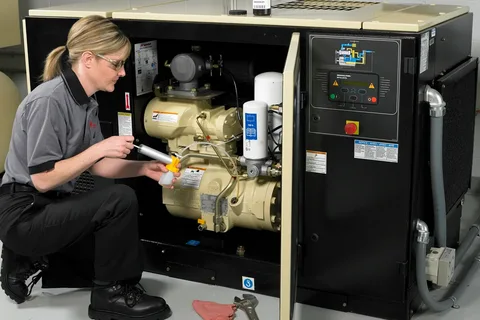Compressed air systems are vital to various industries, from manufacturing to healthcare, where clean and dry air is essential for optimal performance. At the heart of maintaining air quality lies the compressed air dryer filter, which removes contaminants like moisture, oil, and particles. But how do you choose the right one? Let’s dive into the details.
Understanding the Basics of Compressed Air Dryer Filters
What Is a Compressed Air Dryer Filter?
Compressed air dryer filters are designed to remove unwanted contaminants from compressed air, such as water vapour, oil aerosols, and solid particulates. These impurities can damage equipment, reduce efficiency, and compromise end-product quality.
Why Are Compressed Air Dryer Filters Essential?
Without proper filtration, compressed air systems are prone to corrosion, blockages, and wear and tear. This can lead to frequent downtime, higher maintenance costs, and even safety hazards, especially in sensitive industries like food and pharmaceuticals.
Key Applications of Compressed Air Dryer Filters
Compressed air dryer filters are used in:
- Manufacturing: To ensure smooth operation of pneumatic tools.
- Food Processing: For maintaining hygiene and quality standards.
- Healthcare: Delivering sterile, contamination-free air.
- Automotive: Preventing moisture-related damage in spray painting.
Types of Compressed Air Dryer Filters
Coalescing Filters
Designed to trap oil aerosols and water vapour, coalescing filters are perfect for environments requiring ultra-clean air.
Particulate Filters
These filters focus on removing solid particulates, such as dust and rust, from the compressed air stream.
Activated Carbon Filters
Specialised for odour removal and oil vapour adsorption, activated carbon filters are essential for industries needing the highest air purity levels.
Refrigerated and Desiccant Filters
These filters work to remove moisture through refrigeration or desiccant materials, ensuring dry air for sensitive applications.
Key Features to Look For
Filtration Efficiency
Choose a filter with a high-efficiency rating. Look for metrics like particle size retention (e.g., 0.01 microns) and water removal rates.
Pressure Drop Considerations
A good filter minimises pressure drop, maintaining system efficiency and reducing energy costs.
Durability and Material Quality
Filters constructed from robust materials like stainless steel or aluminium ensure longevity and withstand harsh conditions.
Maintenance and Replacement Needs
Opt for filters with accessible parts and straightforward replacement procedures to save time and costs on upkeep.
Compatibility with Your Air System
Sizing the Filter for Your System
Ensure the filter matches your air system’s flow rate and pressure requirements. Undersized filters can lead to inefficiency and increased wear.
Matching with Compressor Specifications
The filter should align with the compressor’s output to maintain system harmony and optimal performance.
Cost and Value Analysis
Upfront Costs vs Long-term Savings
While high-quality filters may have a higher initial cost, they offer durability and lower maintenance expenses in the long run.
Energy Efficiency
Energy-efficient filters reduce operational costs by maintaining optimal airflow without excessive pressure drops.
Installation and Ease of Use
Space Requirements
Compact filters are ideal for systems with limited space, ensuring a seamless fit without overcrowding.
User-friendly Features
Look for features like easy-to-read pressure gauges, tool-free access for maintenance, and visual indicators for filter replacement.
Importance of Brand Reputation and Certification
Industry Standards and Compliance
Choose filters certified by organisations like ISO or ASME to ensure quality and performance.
Reliable Brands in the Market
Opt for established brands known for innovation, reliability, and excellent customer support.
Common Mistakes to Avoid
Underestimating Moisture Issues
Neglecting moisture removal can result in equipment failure and contamination.
Ignoring Filter Maintenance
Routine maintenance is crucial to prevent clogs and maintain efficiency.
Environmental Considerations
Sustainability in Filter Design
Look for eco-friendly options made from recyclable materials.
Proper Disposal of Used Filters
Dispose of filters responsibly to minimise environmental impact, following local regulations.
Tips for Prolonging Filter Lifespan
Regular Maintenance Checks
Conduct periodic inspections to identify wear and tear early.
Monitoring Pressure Drops
Track pressure differentials across filters to detect clogs and inefficiencies.
Conclusion
Choosing the right compressed air dryer filter is not just about ensuring clean air; it’s about boosting your system’s efficiency, reducing downtime, and prolonging equipment lifespan. By focusing on features like filtration efficiency, compatibility, and durability, you can make an informed decision that delivers long-term value.








